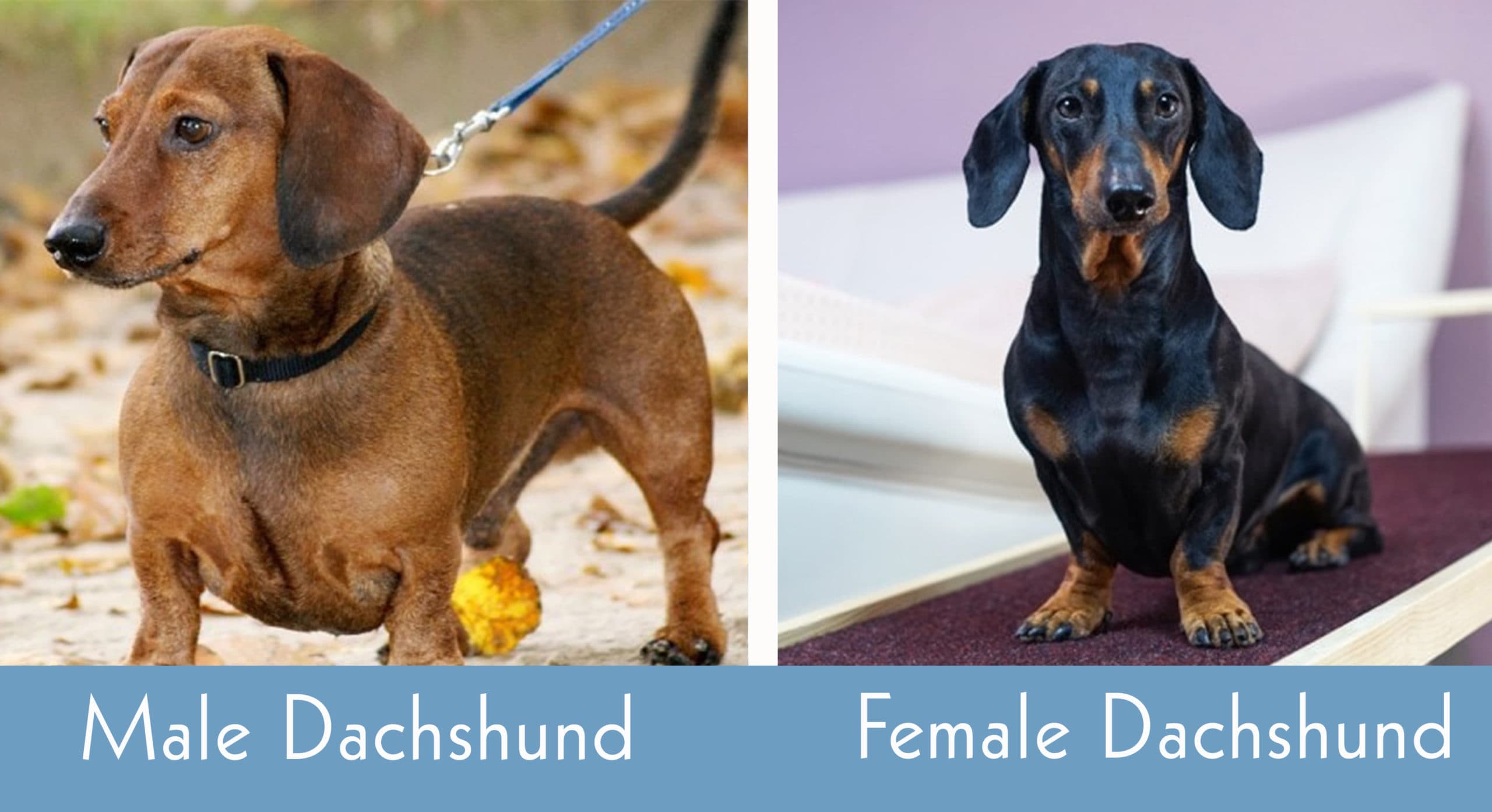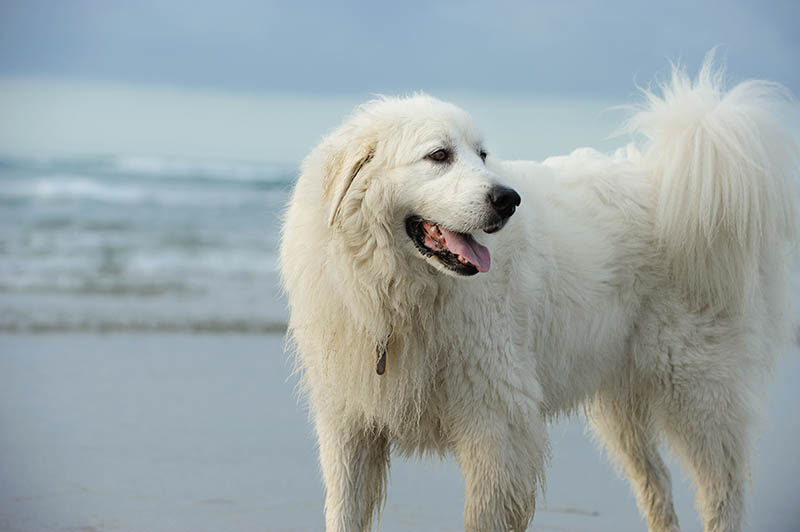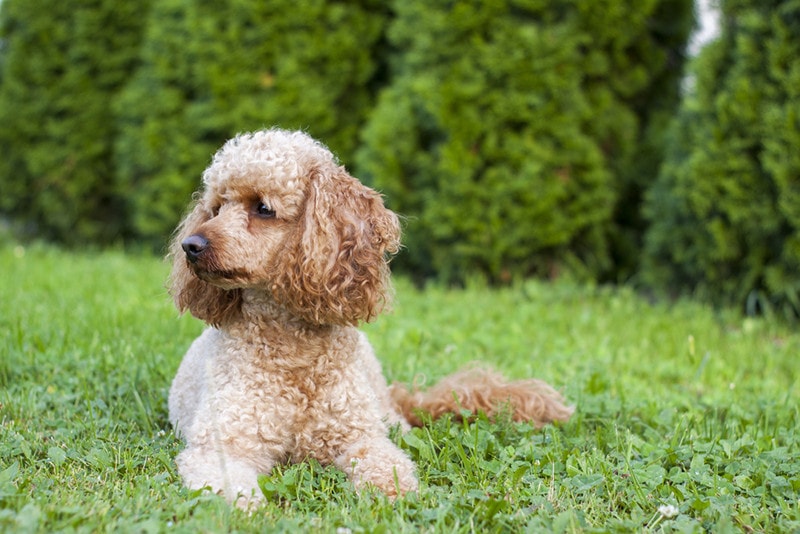Male vs Female Dachshund: Main Differences (With Pictures)
By Kit Copson
Updated on
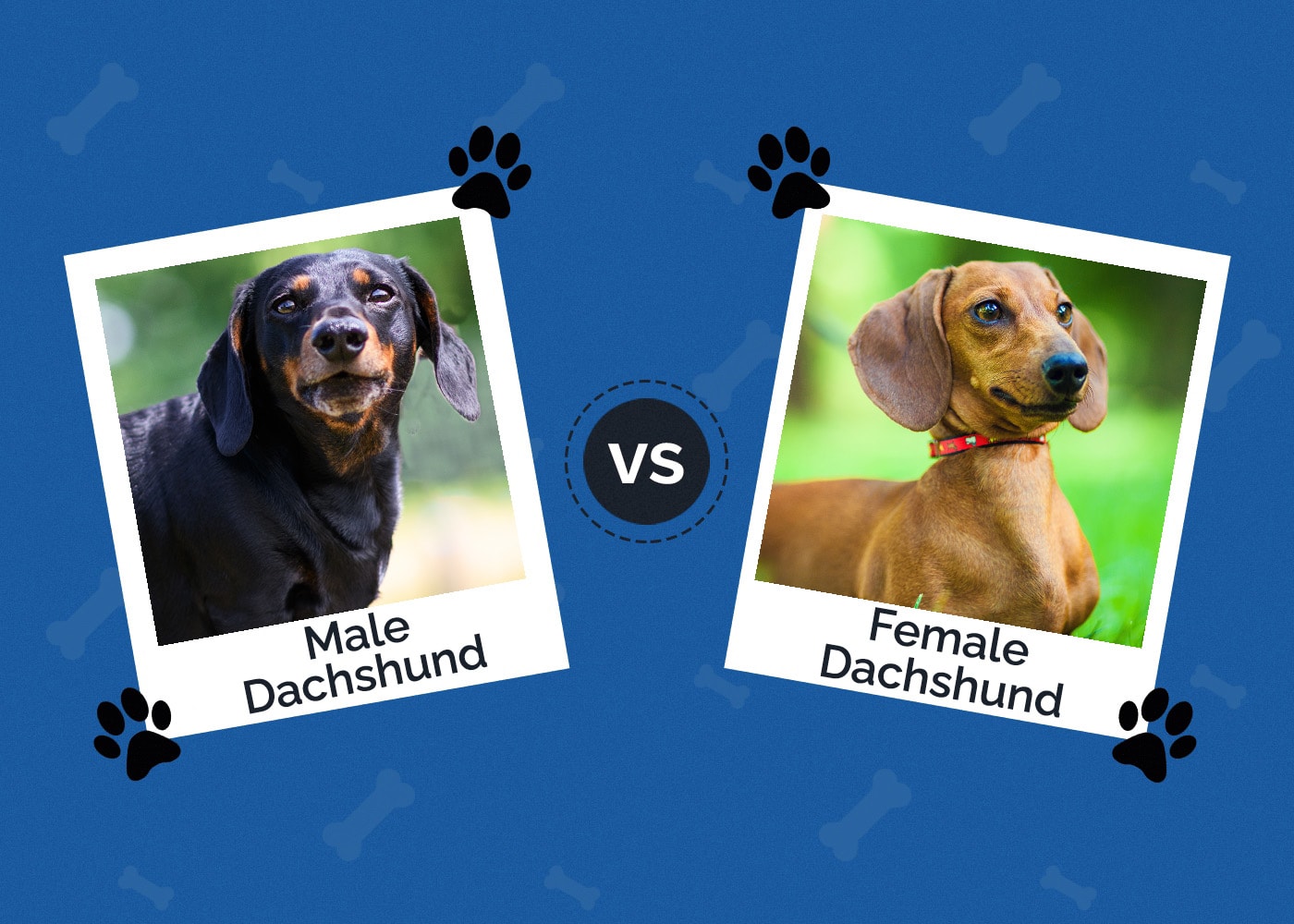
Click to Skip Ahead
If you’re considering adopting a Dachshund, we’re not surprised. These sweet little dogs are currently in the number 10 spot on the American Kennel Club’s most popular dog breeds roundup, due in no small part to their outgoing, bolshy, affectionate, and fun-loving personalities.
When mulling over inviting a new dog into our homes, many of us rely on a narrowing-down process to figure out what kind of dog would best fit into our lives. One of the questions we may ask ourselves is “are there any differences between male and female dogs?”.
This is always a very difficult question to answer because every dog is unique and has their own personality, quirks, and aspects that make them special regardless of gender. Aside from the basic biological differences, all we can rely on to get an idea of any possible differences in temperament are anecdotes and generalizations.
In this post, we’ll explore generalizations about male and female Dachshunds to find out if there are any distinct differences between them.
Visual Differences
At a Glance
- Average height (adult): 8–9 inches (standard), 5–6 inches (miniature)
- Average weight (adult): 16–36 pounds (standard), up to 11 pounds (miniature)
- Average height (adult): 8–9 inches (standard), 5–6 inches (miniature)
- Average weight (adult): 16–36 pounds (standard), up to 11 pounds (miniature)
Dachshund Dog Breed 101
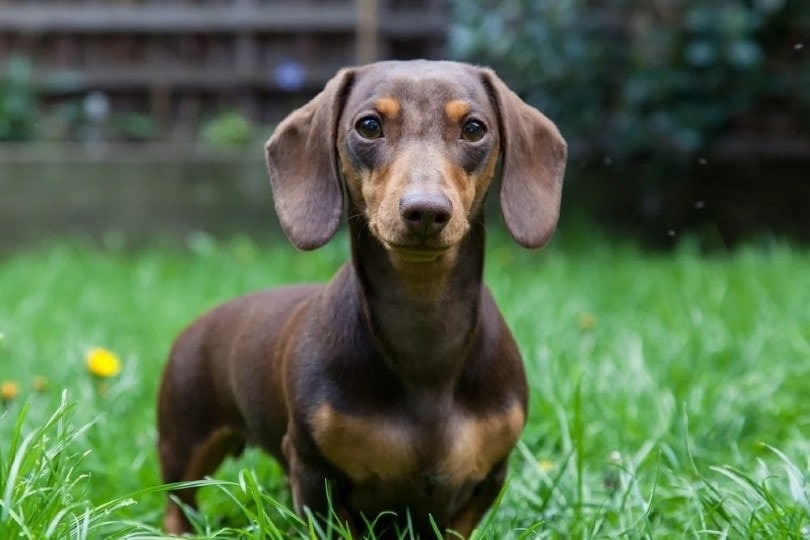
Dachshunds are a small breed of dog that falls into the AKC’s “hound group” and can be either standard-sized or miniature. Known for their “sausage-like” body shapes, Dachshunds originated in Germany, where they were bred to hunt badgers. Miniature Dachshunds were developed to hunt rabbits.
Their history as hunting dogs has instilled in Dachshunds many of the traits they are still known and loved for today—courage, loyalty, and obedience to name but a few. They’re the epitome of the phrase “don’t be fooled by size”—Dachshunds have enough boldness and nerve to match any large dog!
In spite of their short stature and little legs, their bodies were developed to help them survive when faced with badgers—animals that can be very dangerous if threatened. As well as surprisingly strong jaws, Dachshunds have extended rib cages and slightly jutting bridge bones. Their long ribcages helped protect and support vital organs like the heart and lungs and their bridge bones helped protect their eyes.
There are three Dachshund coat types—long-haired, smooth-haired, and wire-haired and several accepted coat colors including black and cream, black and tan, chocolate and tan, cream, red, and wheaten. Standard markings include brindle, sable, piebald, and dapple.
Today, Dachshunds are much-loved family and companion dogs in many homes around the world.
Male Dachshund Overview

Personality / Character
Well-socialized male Dachshunds generally make friendly, playful, and affectionate companions. As well as being bold and brave, they’re reputed to be eager to please, sociable with family, strangers, and other dogs, and, in some cases, somewhat clingy.
Some Dachshund owners have also reported males being more “puppy-like” and appreciative of cuddles than females, though this is purely anecdotal based on people’s experiences.
Training
Dachshunds are super smart and don’t find it difficult to learn new things, though they are known for being somewhat stubborn. For this reason, you’ll need to be consistent, firm but fair, and patient when training your male Dachshund. Their history as hunting dogs taught them key skills that can be utilized in training—concentration, eagerness to please, and a need to be kept busy.
Health & Care
Both male and female Dachshunds have a long life span (12–16 years), but there are certain health conditions they’re prone to, especially back conditions due to having a long spine, being so close to the ground, and bowed legs. Due to their long faces and subsequent excessive nasal lining, Dachshunds are also especially prone to developing fungal and bacterial infections.
In terms of male Dachshunds in particular (as with any male dog) it’s important to keep an eye out for symptoms of testicular cancer. Unneutered male dogs also have the potential to develop undesirable behaviors such as becoming territorial, aggressive with other dogs, and roaming. They may also spray urine in your house, so it’s a good idea to consider having your male Dachshund neutered.

Breeding
One thing to be aware of when it comes to breeding Dachshunds, both male and female, is that mating two dapple Dachshunds results in a double dapple. Mating two dapples is not encouraged due to the health issues associated with double dapple Dachshunds.
- Friendly, loving companions
- Make great playmates
- Intelligent and quick to learn
- Reputed to be cuddly
- Respond well to training
- Very loyal
- Unneutered males may become more territorial
- Unneutered males may spray urine
- Tendency to be stubborn
Female Dachshund Overview
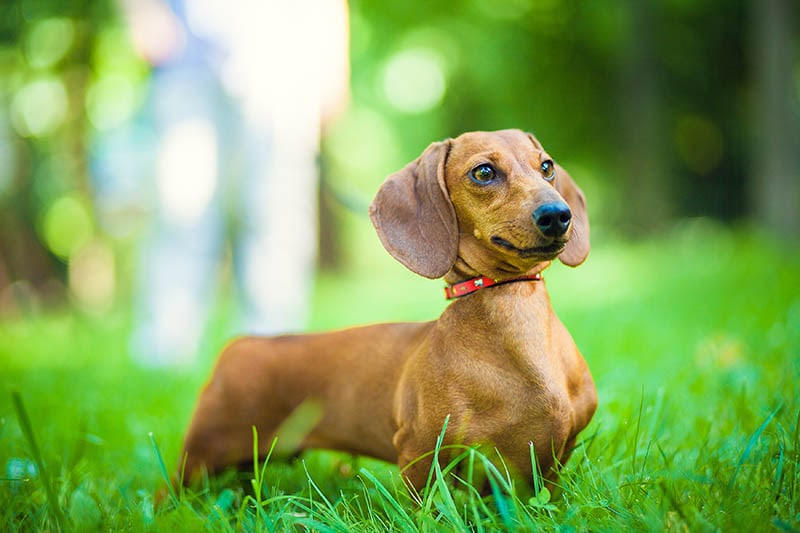
Personality / Character
There are no proven differences in temperament between male and female Dachshunds, so it’s likely that your little lady will share many of the same lovely traits as any male Dachshund. Some female Dachshund owners have commented that they have a tendency to be a little more independent, mature, and reserved with strangers than males.
Again, this is just based on people’s experiences and not on scientific facts. Some owners commented that females can be just as cuddly and clingy as males—if not more so in some cases!
Training
There are no reported differences between male and female Dachshunds when it comes to training. Both genders are generally eager to please and highly intelligent with a hint of stubbornness that may occasionally throw a spanner in the works. If it’s true that female Dachshunds are more mature, they may be slightly easier to train than males.
Health & Care
Female Dachshunds are prone to the same health conditions mentioned above, with the exception, of course, of testicular cancer. If you’re set on getting a female Dachshund, you should be aware that unspayed female dogs have a higher risk of developing uterine and ovarian diseases. Also, when female dogs go into heat, they secrete bloody vaginal fluid as a way of letting males know she is ready to mate.
As with neutering your male Dachshund, spaying your female Dachshund is a great idea. Not only does it reduce the risk of certain diseases and unwanted pregnancies, but it can contribute to your female Dachshund becoming more laid-back.

Breeding
As with all Dachshunds, breeding two dapples is not advised due to double dapple health problems. In addition, since female Dachshunds give birth, there is a chance they may suffer birthing problems like dystocia, but this is a risk with any female dog, not just Dachshunds. Fortunately, a study howed that birthing problems are not common in Dachshunds.
- Smart and trainable
- Make great family pets
- Reputed to mature faster
- Friendly and loyal
- Generally healthy
- Loyal
- Tendency to be stubborn
- Unspayed females more prone to ovarian and uterine diseases
- Unspayed females more prone to guarding behaviors in heat
Which Gender Is Right for You?
We don’t think that gender should ever be a barrier that stops you from adopting the dog you want. The truth is, in spite of generalizations and reports from Dachshund owners, you never know what your Dachshund’s personality will be like until you actually meet them.
Though males are reputed to be cuddlier and females more independent, you could get a male that’s super independent or a female that never stops cuddling! There’s really no way of knowing until you’ve gotten to know your Dachshund better.
Featured Image Credit: (L) Lourdes Photography, Shutterstock | (R) Popova Tetiana, Shutterstock

